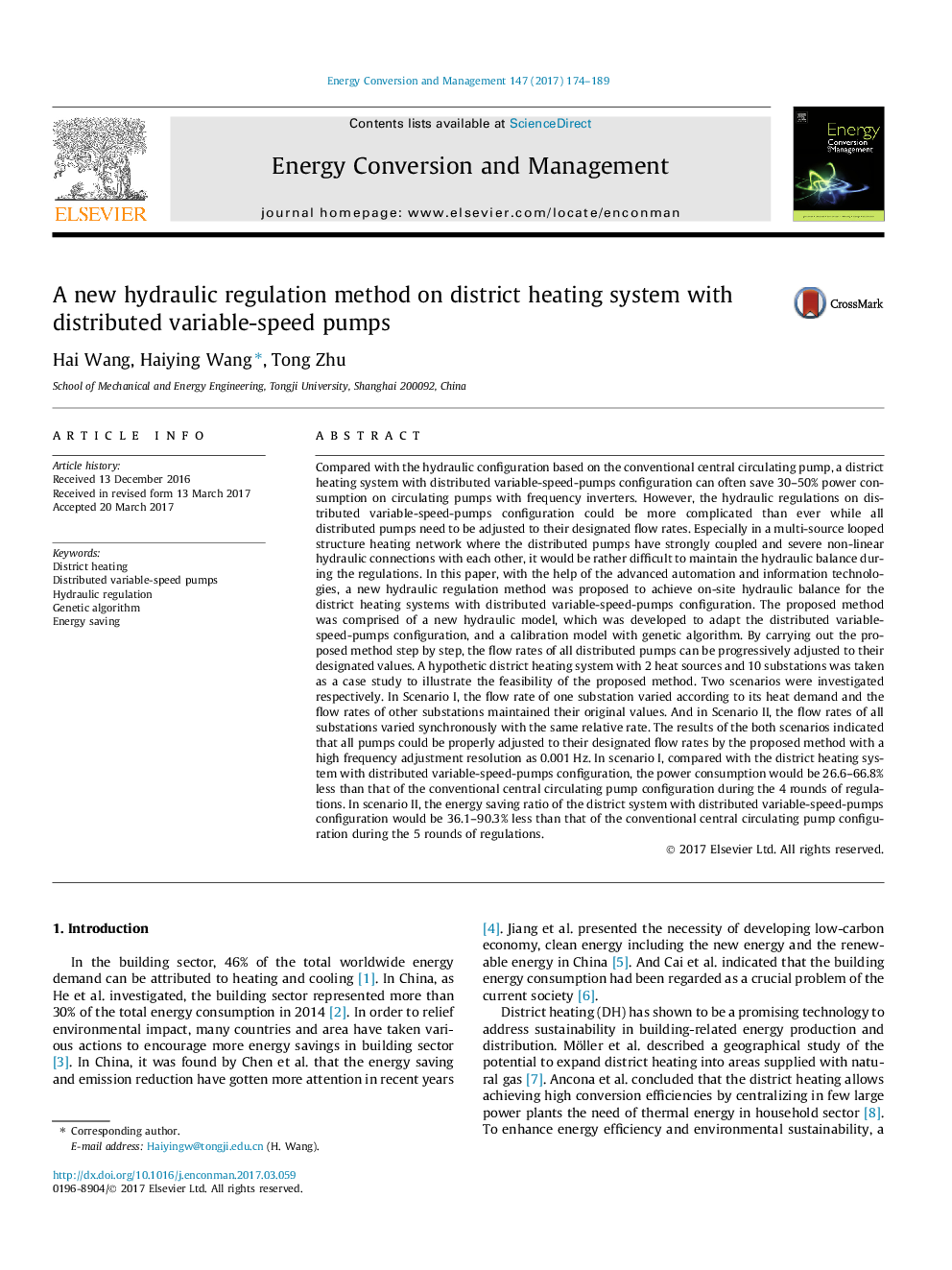| کد مقاله | کد نشریه | سال انتشار | مقاله انگلیسی | نسخه تمام متن |
|---|---|---|---|---|
| 5012635 | 1462815 | 2017 | 16 صفحه PDF | دانلود رایگان |
عنوان انگلیسی مقاله ISI
A new hydraulic regulation method on district heating system with distributed variable-speed pumps
ترجمه فارسی عنوان
یک روش تنظیم جدید هیدرولیکی در سیستم گرمایش مرکزی با پمپ های متغیر سرعت متغیر
دانلود مقاله + سفارش ترجمه
دانلود مقاله ISI انگلیسی
رایگان برای ایرانیان
کلمات کلیدی
گرمایش منطقه، پمپ های متغیر سرعت متغیر تنظیم هیدرولیک، الگوریتم ژنتیک، ذخیره انرژی،
موضوعات مرتبط
مهندسی و علوم پایه
مهندسی انرژی
انرژی (عمومی)
چکیده انگلیسی
Compared with the hydraulic configuration based on the conventional central circulating pump, a district heating system with distributed variable-speed-pumps configuration can often save 30-50% power consumption on circulating pumps with frequency inverters. However, the hydraulic regulations on distributed variable-speed-pumps configuration could be more complicated than ever while all distributed pumps need to be adjusted to their designated flow rates. Especially in a multi-source looped structure heating network where the distributed pumps have strongly coupled and severe non-linear hydraulic connections with each other, it would be rather difficult to maintain the hydraulic balance during the regulations. In this paper, with the help of the advanced automation and information technologies, a new hydraulic regulation method was proposed to achieve on-site hydraulic balance for the district heating systems with distributed variable-speed-pumps configuration. The proposed method was comprised of a new hydraulic model, which was developed to adapt the distributed variable-speed-pumps configuration, and a calibration model with genetic algorithm. By carrying out the proposed method step by step, the flow rates of all distributed pumps can be progressively adjusted to their designated values. A hypothetic district heating system with 2 heat sources and 10 substations was taken as a case study to illustrate the feasibility of the proposed method. Two scenarios were investigated respectively. In Scenario I, the flow rate of one substation varied according to its heat demand and the flow rates of other substations maintained their original values. And in Scenario II, the flow rates of all substations varied synchronously with the same relative rate. The results of the both scenarios indicated that all pumps could be properly adjusted to their designated flow rates by the proposed method with a high frequency adjustment resolution as 0.001Â Hz. In scenario I, compared with the district heating system with distributed variable-speed-pumps configuration, the power consumption would be 26.6-66.8% less than that of the conventional central circulating pump configuration during the 4 rounds of regulations. In scenario II, the energy saving ratio of the district system with distributed variable-speed-pumps configuration would be 36.1-90.3% less than that of the conventional central circulating pump configuration during the 5 rounds of regulations.
ناشر
Database: Elsevier - ScienceDirect (ساینس دایرکت)
Journal: Energy Conversion and Management - Volume 147, 1 September 2017, Pages 174-189
Journal: Energy Conversion and Management - Volume 147, 1 September 2017, Pages 174-189
نویسندگان
Hai Wang, Haiying Wang, Tong Zhu,
